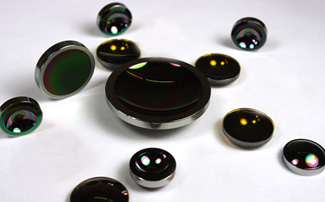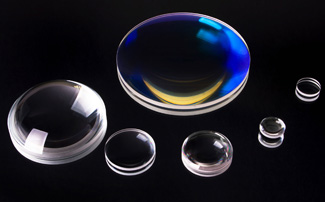InfraRED OPTICal LENSES
Optics Lens
A lens is a clear (transparent) object (like glass, plastic or even a drop of water) that changes the way things look by bending the light that goes through it. They may make things appear larger, smaller, or upside-down. Some places lenses are used include spectacles (eyeglasses), contact lenses, cameras, projectors, microscopes, telescopes, magnifying glasses, etc. Eyes are also considered lenses.
A lens is a clear (transparent) object (like glass, plastic or even a drop of water) that changes the way things look by bending the light that goes through it. They may make things appear larger, smaller, or upside-down. Some places lenses are used include spectacles (eyeglasses), contact lenses, cameras, projectors, microscopes, telescopes, magnifying glasses, etc. Eyes are also considered lenses.
IR Optical Lens
Our IR Optical Lens are High-quality a spheres for the near, middle and far infrared range (wavelength range from 0.8 to 12Ám) are diamond-turned optics with excellent properties for a very wide range of applications. aspheric on develops and manufactures customer-specific IR lenses are optical lenses with diameters of up to 420 mm and shape accuracies of up to 100nm PV or 20nm RMS for applications, such as thermal image capture, distance measurement and image enhancement.
Our IR Optical Lens are High-quality a spheres for the near, middle and far infrared range (wavelength range from 0.8 to 12Ám) are diamond-turned optics with excellent properties for a very wide range of applications. aspheric on develops and manufactures customer-specific IR lenses are optical lenses with diameters of up to 420 mm and shape accuracies of up to 100nm PV or 20nm RMS for applications, such as thermal image capture, distance measurement and image enhancement.
Mechvac has the complete infrastructure for production of Infrared Optical Lenses with Aspheric diffractive as well as spherical profiles can be made with utmost accuracy and precision.
Material such as Germanium, Silicon, Calcium Fluoride, Zinc Sulfide and Zinc Seleenide are produced.


Material such as Germanium, Silicon, Calcium Fluoride, Zinc Sulfide and Zinc Seleenide are produced.

Germanium Lenses
are ideal for use in Mid-Wave Infrared and Long-Wave Infrared applications, including thermal imaging, spectroscopy, or FLIR. Due to thermal runaway, or the decrease in transmission as temperature increases, Germanium Lenses should be used at temperatures below 100°C. Germanium's high density (5.33 g/cm3) should be considered when designing for weight-sensitive systems.
are ideal for use in Mid-Wave Infrared and Long-Wave Infrared applications, including thermal imaging, spectroscopy, or FLIR. Due to thermal runaway, or the decrease in transmission as temperature increases, Germanium Lenses should be used at temperatures below 100°C. Germanium's high density (5.33 g/cm3) should be considered when designing for weight-sensitive systems.

Zinc Sulphide Lense :
Mechvac supply a range of quality Zinc Sulphide optical components including Zinc Sulphide lenses. Zinc Sulphide (ZnS) is a widely-used IR transmitting material used for windows, lenses and other optical components. The material transmits at about 50% between 0.4 -12μm before dropping off to zero transmission at around 15μm. Its low absorbance in the IR spectrum makes it suitable for CO2 lasers operating at 10.6μm. Zinc Sulphide has a pale yellow appearance and a hardness of HK160. Although the material is resistant to thermal shock, it is not recommended for harsh environments. Zinc Selenide is used in the form of optical windows in FLIR (Forward Looking Infrared) systems, as meniscus, spherical or cylindrical lenses and as resonator windows in CO2 lasers.
Mechvac supply a range of quality Zinc Sulphide optical components including Zinc Sulphide lenses. Zinc Sulphide (ZnS) is a widely-used IR transmitting material used for windows, lenses and other optical components. The material transmits at about 50% between 0.4 -12μm before dropping off to zero transmission at around 15μm. Its low absorbance in the IR spectrum makes it suitable for CO2 lasers operating at 10.6μm. Zinc Sulphide has a pale yellow appearance and a hardness of HK160. Although the material is resistant to thermal shock, it is not recommended for harsh environments. Zinc Selenide is used in the form of optical windows in FLIR (Forward Looking Infrared) systems, as meniscus, spherical or cylindrical lenses and as resonator windows in CO2 lasers.
Diameter |
10 to 200 mm |
Diameter Tolerance |
± 0.005 |
Center Thickness Tolerance |
± 0.008 |
Focal Length Tolerance |
± 2% |
Surface Quality |
40:20 |
Surface Irregularity |
1 Fringe @ 633 nm |
 |
 |
|
Silicon Lenses |
Calcium Floride Lenses |
Zinc Selenide |
 |
 |
|
| Gasir | Gallium Arsenide |

